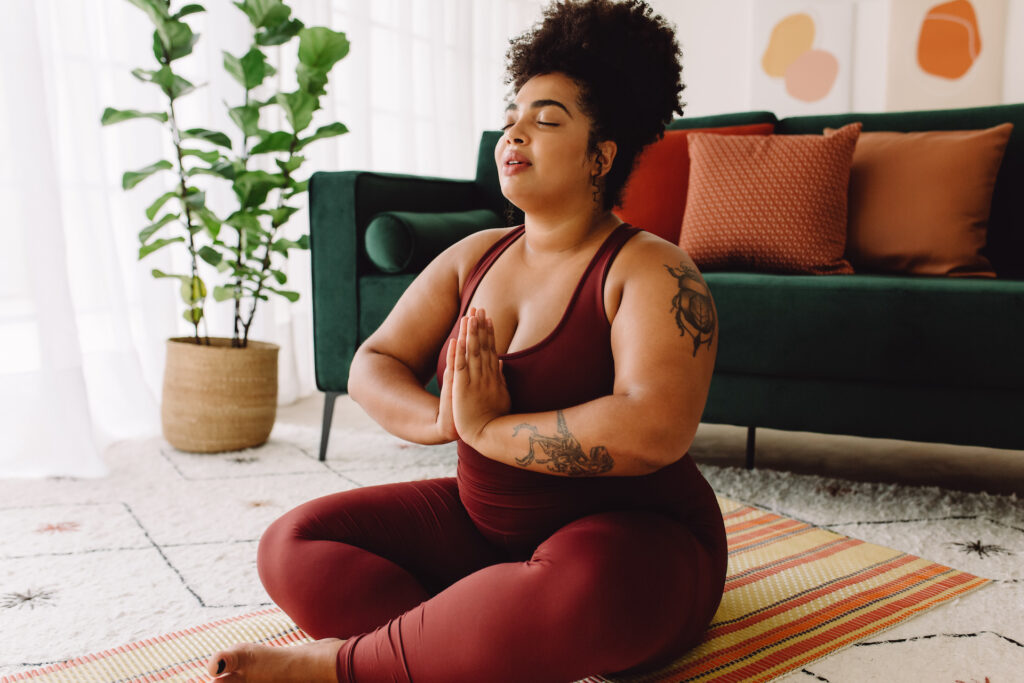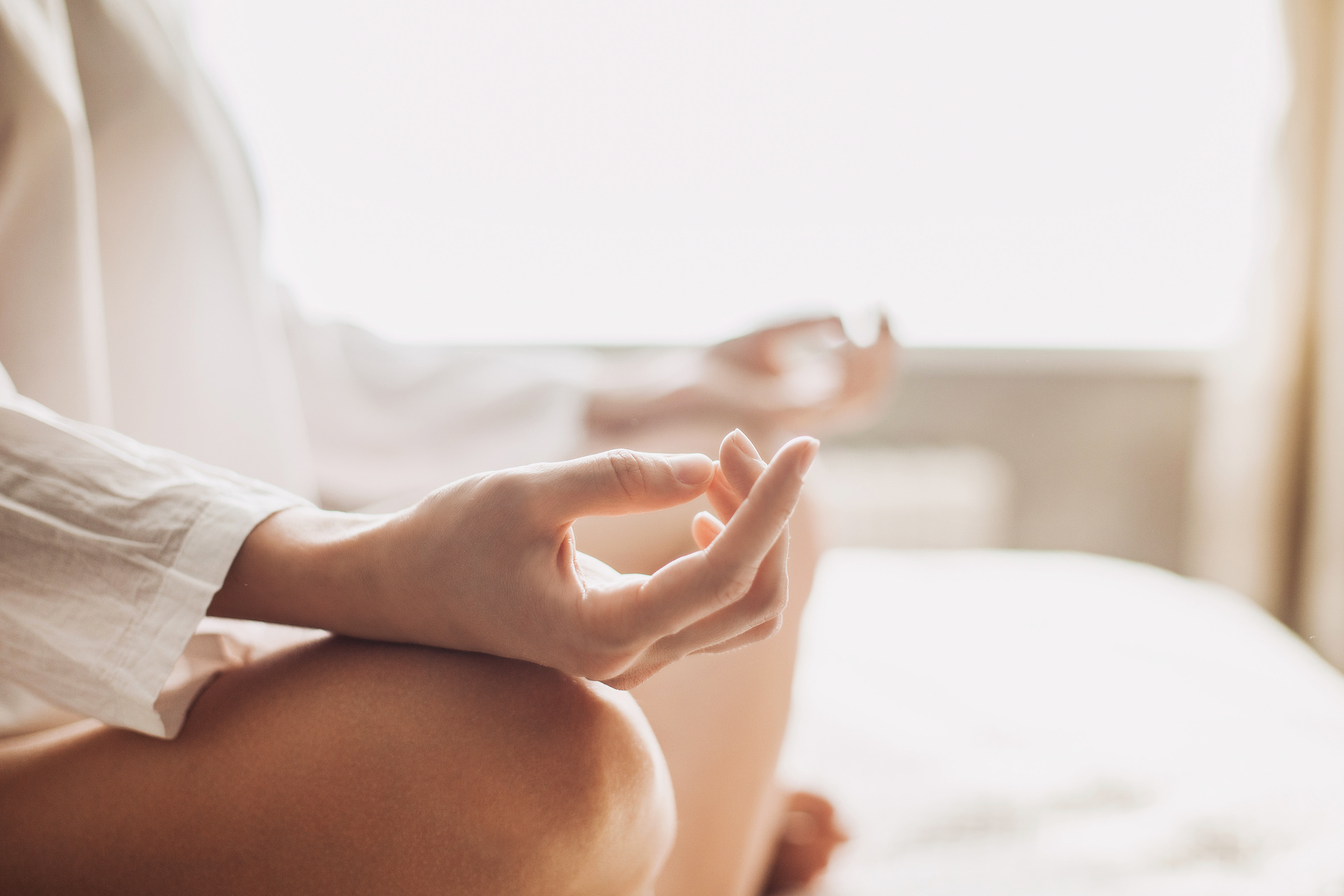A lot of research on mindfulness and meditation suggests great benefits for those struggling with anxiety and depression. It can help us connect our mind and body and let go of unwanted tension we hold onto.
Let’s explore what meditation is and what happens when we practice it.
Where to Start? Focus on Your Breath
Sit down, close your eyes, and gently bring your attention inwards. Focus on your breath and how it feels to breathe deeply into your stomach, then slowly release your breath. By doing this, you disengage from all outside stimuli for the duration of your practice.
Settling attention on breath and body awareness inherently calms and soothes us since we are no longer caught up in our thoughts while doing so. The mind gets to rest as we stay with body awareness. The longer we stay with the body, the more our attention begins to infuse the different parts of our physicality.

As your body begins to relax, you may begin to notice any emotions, feelings, or tension present. The body can hold tension in areas you may normally not be aware of. Meditation can help to find those points of tension as we stay in “alert restfulness”. Our thinking naturally calms down on its own and we begin to experience peace.
Practice, Practice, Practice
With some practice, you might also notice how the whole body begins to soften. Try to stay present and gently feel where the different parts of your body begin to relax. You can also use the awareness of breath (as it moves in and out on its own) as an anchor that helps you stay in present-moment awareness.
Presence becomes an inner resource you can connect with any time you feel emotionally overwhelmed or distressed. This is like having a support system you can connect with any time you need a hand with something.
Using meditation as a resource helps us regulate ourselves and come back to a more settled internal state where we feel safer and more comfortable in our skin. With practice, you’ll find entering a state of mindfulness will come easier over time.
Meditation, Trauma, and Recovery
When meditation and trauma work are both engaged, I believe people advance very efficiently in their healing and recovery. These two modalities (meditation and trauma healing) support each other. The more we continually connect our mind and body, the better understanding we gain in order to heal.
Over time, meditation increases our connection with our bodies and we become aware of how we feel much more quickly. This is very helpful when it comes to recovery.

When sudden feelings of sadness, anger, guilt, or shame are activated within us, we can turn to our breath. Take slow, deep breaths as you move through your feelings. We can turn towards these emotions with the help of our meditative capacity and hold them in compassion the way that we might hold a young child that is distressed. This is a self-acceptance practice that allows us also to self-regulate.
As our practice deepens, we might get into very deep states of peacefulness and begin to feel what Buddhists talk about when they study and practice meditation as a spiritual path.
Discover Mindfulness Techniques at Georgia Strait
At Georgia Strait Women’s Clinic, we understand the powerful benefits and healing components of mindfulness techniques. Our programs incorporate yoga, mindful self-compassion, meditation, QiGong sound healing, and a variety of workshops to help better connect the mind and body. If you’re interested in learning more about our programs and services, please visit our website or call us today.




